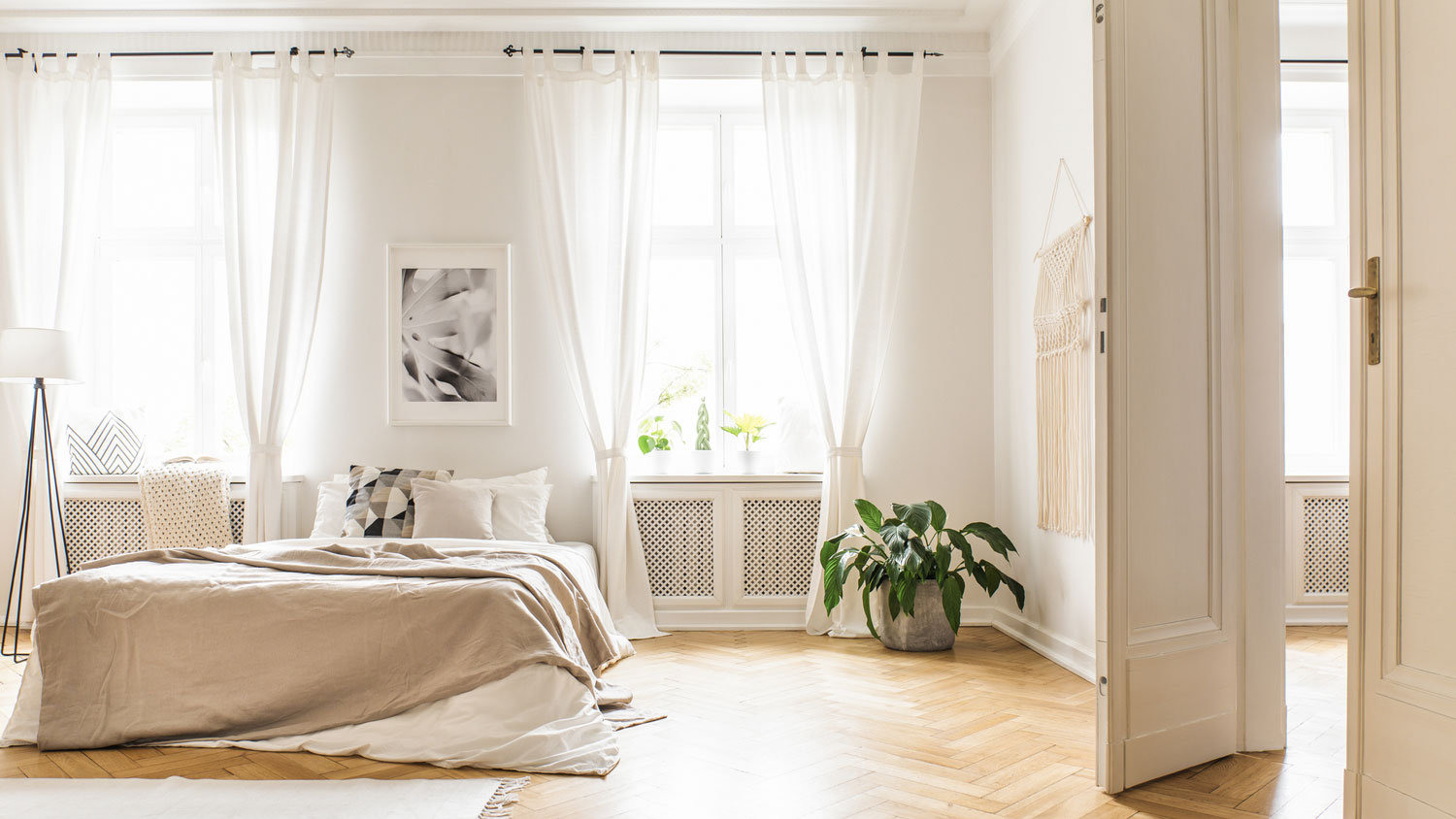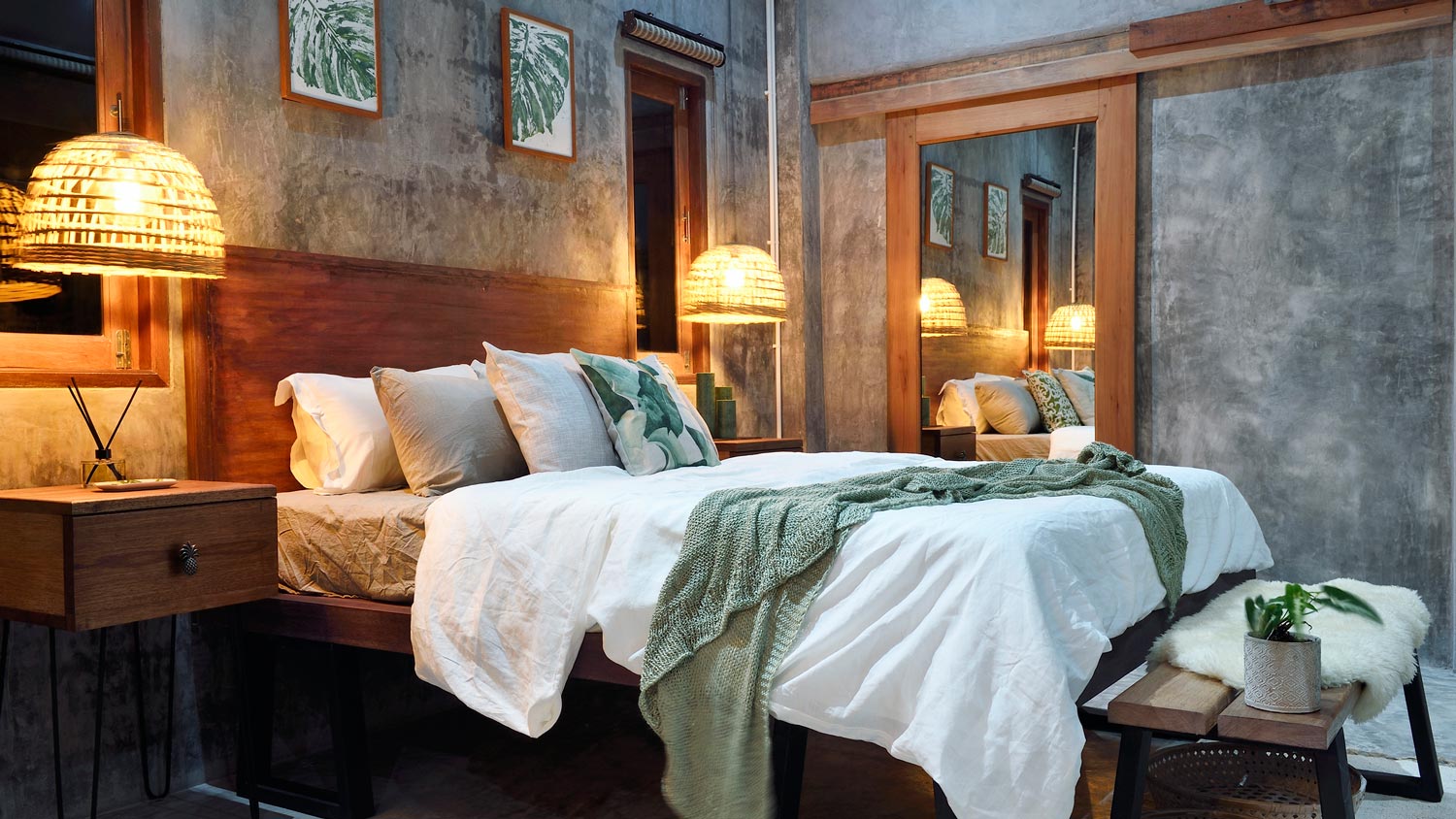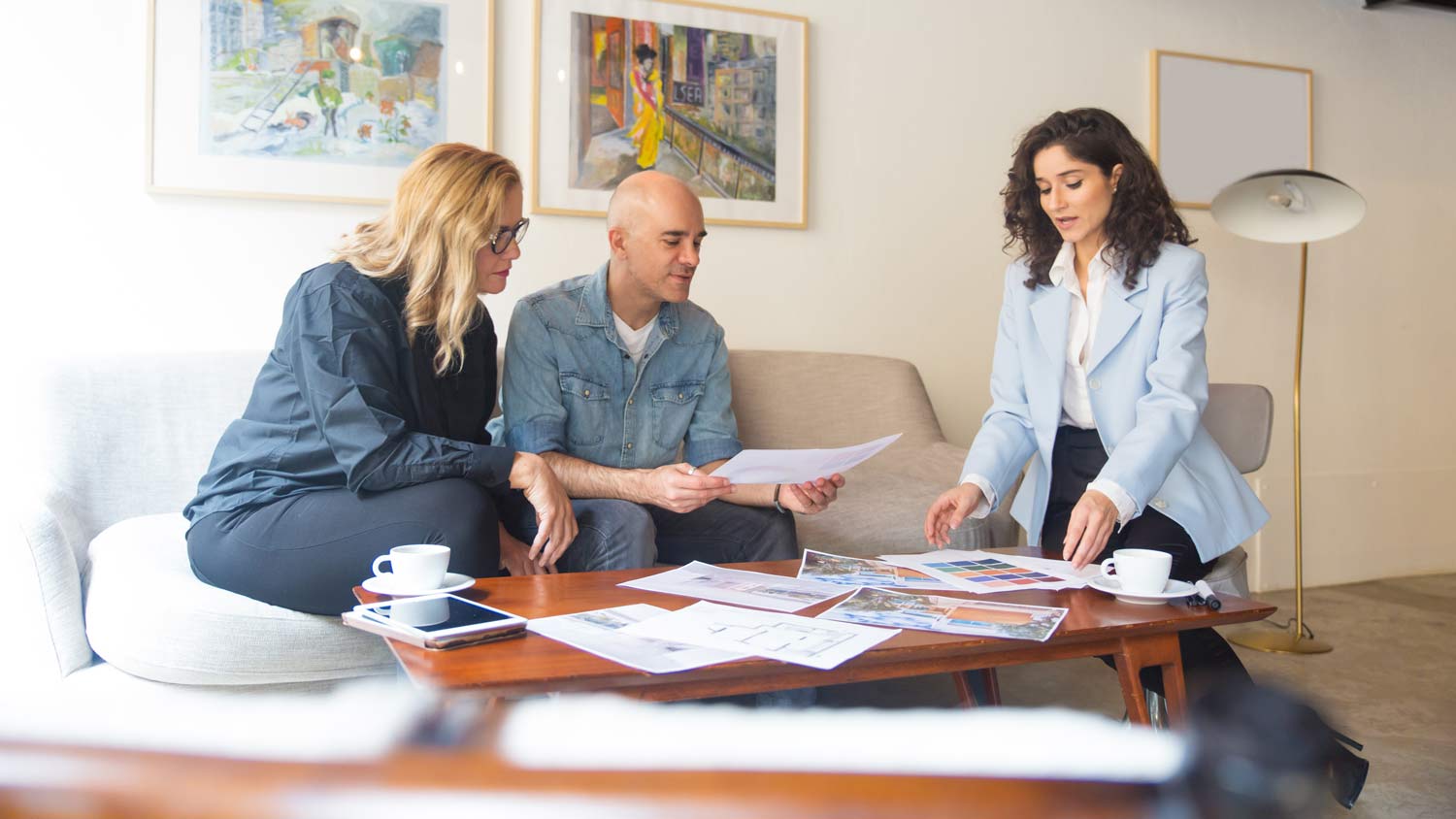10 Tips That’ll Help You Create a Relaxing Bedroom Environment
Cut down on counting sheep by creating a haven designed for drifting off with ease


You know you're officially an adult when you look forward to bedtime. So, what's the key to designing a relaxing bedroom sanctuary that will have you putting on your PJs and climbing into bed extra early? It turns out, it takes far more than buying the right fluffy pillows and filling the room with houseplants—though that sure doesn't hurt.
Check out these 10 tips on how to create a relaxing bedroom worthy of hibernation and a night of dream-filled REM sleep.
1. Practice Good Sleep Hygiene
Everything from noise machine companies to bedding brands will advertise the magical secret to a good night's sleep. In the end, it’s about developing good sleep hygiene.
The Centers for Disease Control and Prevention (CDC) explains that sleep hygiene comes down to lifestyle consistency, avoiding screens in our bedrooms, and creating a sleeping space that is "quiet, dark, relaxing, and at a comfortable temperature."
In other words, the secret to a restful bedroom is not complicated, and there are many ways to check the CDC's boxes.
2. Choose a Calming Color Scheme
Let's start with a design factor that has huge control over a bedroom's vibe: the paint color. If you love a good hot pink or flowery wallpaper pattern, it may be best to save it for the living room. Bedrooms are a great place to use paint colors that create calm.
We're talking natural hues like pale blue, green, and pastel yellow or lavender. Don't shy away from a variation of white, gray, or beige if you're going for a minimalist look and want to pick up the sunlight.
3. Choose a Lasting Layout
Finding the right layout can be a bit tricky in small bedrooms, especially since the star of the furniture show—your bed—takes up the majority of the room. However, it's important to choose a layout that considers the flow of movement, access to storage, and how light comes through the window in the morning.
If you're low on space, opt for under-the-bed storage or floating shelves to keep floor space open so you’re creating a relaxing and clutter-free bedroom environment.
4. Keep Clutter Under Control

Ample research shows that clutter can evoke feelings of stress, and ironically, stress can create clutter. It's a vicious cycle. It's best to avoid opening your eyes in the morning to a pile of tangled necklaces or books you've been meaning to read.
Make a weekly effort to declutter your space and keep your bedroom as stuff-free as possible. Delegate papers, books, and other small items that remind you of your day to a bedside table drawer or in the next room. Go a step further by simplifying unnecessary decor on your shelves and dressers so the eye has less to latch onto.
5. Avoid Multi-Purpose Areas
Maximizing the square footage in our home is an art, especially if you work from home or need extra closet space. If you do use your bedroom for something other than sleep, close up the area at the end of the day.
For example, opt for a cloffice—the growingly popular closet/office mashup—with a door or curtain. This allows you to close up the area before sleep so you're not distracted from rest.
6. Upgrade Your Bedding
Allergens love to nestle into our bedding and mattress as much as our pets do. Detox your sleeping space by opting for a low-VOC mattress, organic materials for your sheets and duvet, and naturally stuffed pillows that avoid off-gassing. The right bedding also plays a large role in how hot or cool you sleep—something we'll touch on in a moment.
7. Control the Light

The University of Michigan talks a bit about how to balance light levels before going to sleep to create a relaxing bedroom. First of all, you want to make sure your room is void of light when you sleep. Consider blackout curtains if you live in an area with bright street lamps or lights from passing cars.
When it comes to bedroom lighting design, opt for dimmer lights to avoid risking throwing off your melatonin levels and circadian rhythms. Switch out standard overhead lighting for dimmable sconces or recessed lighting and pair with a small bedside table for reading.
8. Know Your Sleeping Temperature
The best sleep temperature is not the same for everyone. However, medical professionals recommend aiming for between 60 and 67 degrees Fahrenheit for a comfortable night's rest. If you don't have great natural airflow from your windows, speak with your local HVAC team about ways to control your bedroom temperature.
9. Skip the Devices
We've all heard that we shouldn't look at our phones and tablets before bed, but how does this relate to bedroom design? Pick a different spot for the television, even if you're tempted to watch a movie at the end of the day. And if you can help it, set up a phone charging station out of arm's reach from your bed. You can even—dare we say—charge your phone in another room.
10. Create a Private Haven
The final puzzle piece for a relaxing bedroom is privacy—both from the outdoors and from the rest of your home. You should feel like you're climbing into a dark, cool, and silent cave at the end of the day without the distractions of the outside world.
Pull this off by opting for the right window treatments that control natural light, particularly blinds and curtains. Keep your bedroom door in good shape if it has issues closing or doesn't keep out sound and lighting. Or even add a white noise machine to create a soothing barrier between you and all the things you don't need to think about until the sun comes up in the morning.





- The Best Temperature for Sleep
- How to Decorate a Bedroom: 8 Tips to Get a Room You’ll Love
- How to Create the Ultimate Bedroom Retreat
- 9 Bedroom Paint Color Tips for Sweeter Dreams and Brighter Mornings
- Best Bedroom Paint Colors and How to Choose One
- 10 Tips to De-Stress Your Bedroom and Get a Better Night’s Sleep
- 5 Bedroom Layout Ideas for Rest, Relaxation, and Functionality
- 26 Fun Kids' Room Ideas (That Grown-Ups Will Love Too)
- 30 Bedroom Decor Ideas to Showcase Your Personal Style
- Learn How to Clean Your House (and Maybe Even Have Fun Doing It) With These 27 Tips















